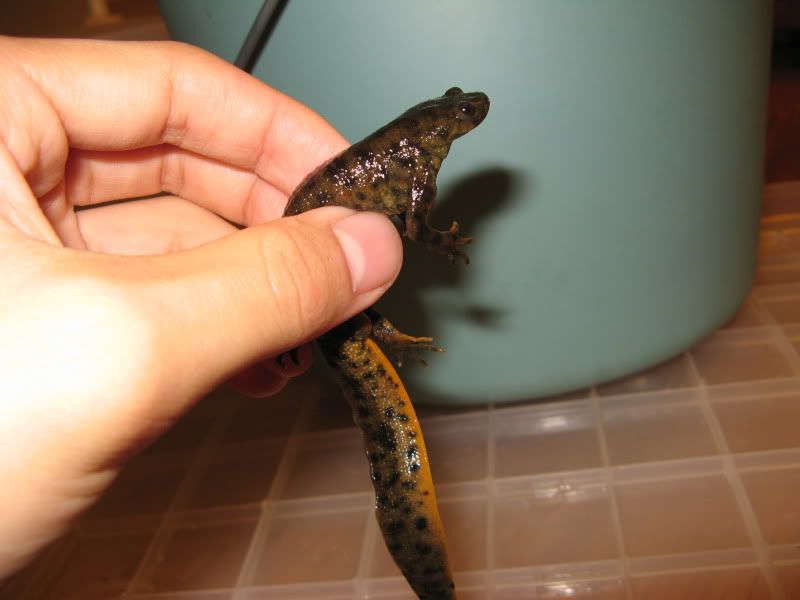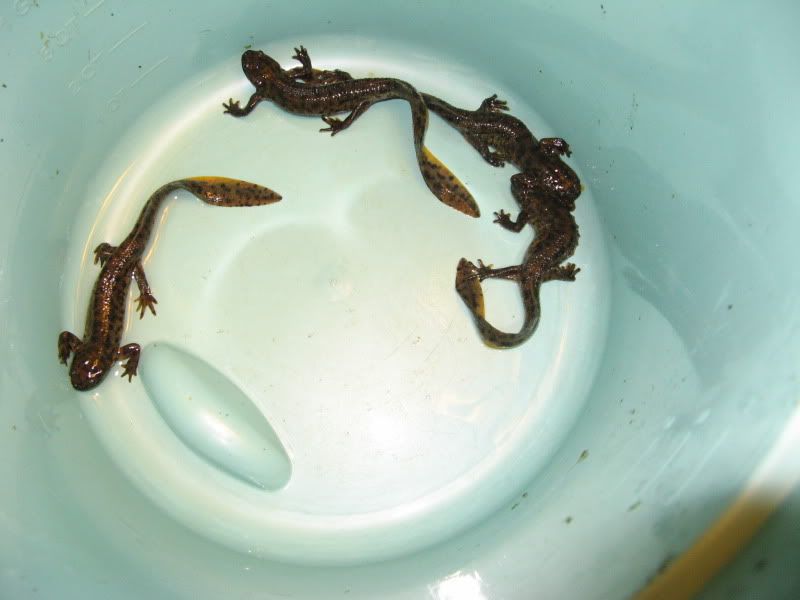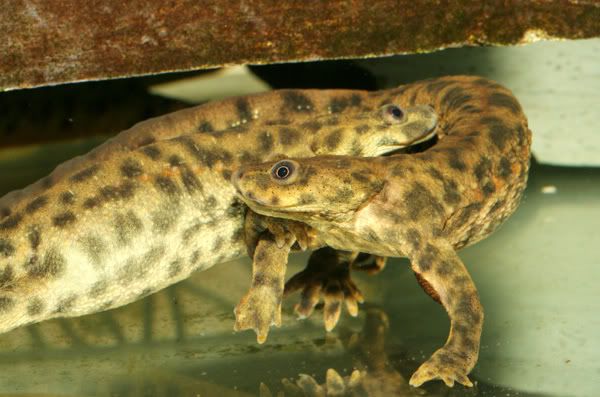Their has been much breeding behavior since dropping in several males but I have yet to see a successful spermatophore deposit/takeup...actually the females seem quite uncooperative and the other tankmates too inquisitive for much to happen.
I can't help but wonder if natural selection is selecting against those male newts who lack the ability to amplex females properly though! I have seen just about every possible mistake!(wrong legs, wrong direction, both, not a female, upside down, only one arm clasped etc...) The males seem to know they've made a mistake(they do not release an arm and attempt to do the circle dance) but seem to refuse to give up the hold on the female until distracted.
I've also seen what look like rejection behavior. Upon being touched or sniffed by a male one female(who had be left in the pond after all the rest were removed and thus likely got lots of attention) in particular would straighten her body and tightly press here arms and legs against her sides. Other tactics seemed to be not cooperating when the male attempts to spin, or imbibing too much air(intentional/unintentional?) so the pair ends up having trouble diving.











